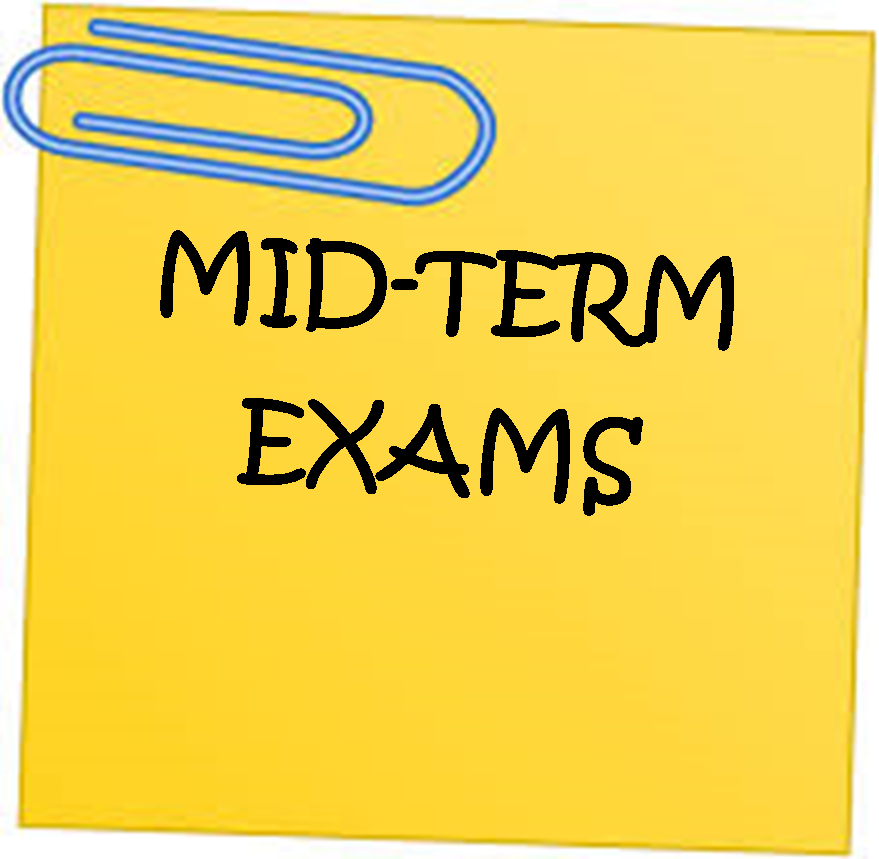Section outline
-

!Welcome to The Course!
Get ready to explore the fundamentals of Biology, Chemistry & Computation—from molecular biology to computational chemistry, DNA sequencing, and algorithm implementation. Let’s dive in!
Course Information:

Course Code: CSE115
Course Title: Introduction to Biology and Chemistry for Computation
Course Credit: 3
Teacher's Information:

Faria Nishat Khan
Lecturer
Department of Computer Science and Engineering
Daffodil International University
Room no. 505, AB4
Daffodil Smart City, Ashulia
Email: farianishat.cse@diu.edu.bd
Teacher ProfileCourse Rationale
To explore a new area of expertise that emerged from a fertile field- the combination of biology, chemistry and information sciences. It also exposes the reader to the fascinating structure of biological data and explains how to treat related combinatorial and statistical problems. This describes the mathematical structure of biological data, especially from sequences and chromosomes. This course will give a prologue to field DNA sequencing and searching algorithms along with different computational chemistry methods (e.g.: molecular mechanics, quantum mechanics, etc.
Course Objective
-
To provide a solid conceptual understanding of the fundamentals of Introduction to Biology & Chemistry for Computation. More specifically,
-
To learn the basic concepts of molecular and cellular biology.
-
To learn the differentiation between molecular mechanics & quantum mechanics.
-
To learn the importance of computational chemistry in chemical industries.
-
To learn DNA sequence alignment Technique.
-
To learn implementation of different searching algorithms in Computational Biology.
Course Outcomes (CO’s):
Course Outcomes (CO) CO1 Illustrate molecular & cellular biology and identify impacts/benefits of computational chemistry and Biology. C3: Applying CO2 Classify different Computational Biology and Chemistry methods and consider the applications in real life and industry centric scenarios. C4: Analyze CO3 Demonstrate their effective knowledge of different Computational Biology Algorithms and experiment with real life scenarios. C3: Applying Evaluation
Mid Term Exam 25% Quizzes 15% Assignment 5% Attendance & Performance 7% Final Exam 40% Presentation 8% Textbook/ Reference Materials
-
-
Week 1
-
Topics to be covered:
- Course Introduction (learning objectives)
- Get to know the students and their background/ interests
- Motivation of Studying Biology and Chemistry for computation
- What is Bioinformatics and Computational Chemistry
- Important Aspects of Bioinformatics and Computational Chemistry
Expected Learning Outcome
- Able to understand the relation between computer Scientists with Biologists and Chmists
- Able to grow research interest in this field
-
Week 2
-
Topics to be covered:
- Basics of Molecular Biology-DNA, RNA
- Structure of DNA and RNA, DNA Replication
- Cell Division- Mitosis and Meiosis
Expected Learning Outcome:
- Able to understand the structural and functional difference between DNA and RNA
- Able to know how the cell division is occurred in a cell and DNA Replication
-
Week 3
-
Week 4
-
Topics to be covered:
- Different types of mutations
- Gene Duplication- Homolog, Ortholog, Paralog and Speciation
- Read Mapping- Keyword tree, suffix tree, suffix array, Burrows Wheeler Transform
Expected Learning Outcome:
- Able to know different types of mutations
- Analyze and differentiate clearly about Homolog, Paralog, Ortholog and Speciation
- Able to understand suffix tree, suffix array, Burrows wheeler transform
-
Opens: Tuesday, 9 September 2025, 12:00 AMDue: Wednesday, 10 September 2025, 12:00 AM
Instructions
- Submit your Assignment in a PDF file.
- One submission from each group is enough
- Make sure you have proper assignment cover and all of your team members' details on it.
- Late submission may result in number deduction.
-
Week 6
-
Topics to be covered:
- Sequence Alignment- why it is needed
- Sequence Alignment Method
- Global and Local Alignment for pairwise sequence
Expected Learning Outcome:
- Able to know Sequence Alignment, different methods of pairwise sequence
- Able to perform Global and Local alignment for pairwise sequence
-
Sequence Alignment
-
Opens: Friday, 27 June 2025, 12:00 AMDue: Friday, 27 June 2025, 11:59 PM
-
Opens: Friday, 27 June 2025, 12:00 AMDue: Saturday, 28 June 2025, 11:59 PM
- Sequence Alignment- why it is needed
-

Date:
-
Midterm Exam Syllabus
- Introduction to Biology & Chemistry for Computation
- Role of chemistry in computer science & engineering
- Importance of Computer in Chemical Industries
- Molecular and Cellular Biology
- DNA Sequencing
- Sequence Alignment
-
-
Week 7
-
Topics to be Covered
- Different types of mutations
- Gene Duplication- Homolog, Ortholog, Paralog and Speciation
- Read Mapping- Keyword tree, suffix tree, suffix array, Burrows Wheeler Transform
Expected Learning Outcome
- Able to know different types of mutations
- Analyze and differentiate clearly about Homolog, Paralog, Ortholog and Speciation
- Able to understand suffix tree, suffix array, Burrows wheeler transform
-
Gene Duplication and Read Mapping Introduction
Burrows Wheeler Transform
-
Week 8
-
Topics to be covered:
- TP, TN, FP, FN
- Selectivity, Sensitivity
- Hash Table used in FASTA
Expected Learning Outcome:
- Able to understand TP, TN, FP, FN, Sensitivity and Selectivity
- Able to create hash table in FASTA.
-
Database Searching lecture video part 1
Database Searching lecture video part 2
-
Week 9
-
Opens: Monday, 11 August 2025, 12:00 AMDue: Thursday, 21 August 2025, 11:59 PM
Objective:
This assignment challenges students to investigate the environmental footprint of computational chemistry, particularly in terms of energy consumption, carbon emissions, and electronic waste. Students will analyze pollution caused by large-scale simulations, cloud computing, and high-performance computing (HPC) systems and propose strategies for mitigating these environmental effects.
Evaluation Criteria:
Criteria Weightage Depth of understanding 20% Relevance and completeness of case study 30% Analysis and proposed solution relevance 30% Presentation, writing style, and references 20% -
Submission Deadline: 12.04.2025
- File Type: PDF
-
Submission Mode: BLC
Instructions:
-
Understanding the Environmental Impact of Computational Chemistry
-
Research and analyze how computational chemistry contributes to environmental pollution
-
-
Finding Sustainable Solutions
- Find sustainable mitigation techniques that is may or may not have been discovered.
-
You can propose prevention or solutions.
- Sustainable alternatives are also acceptable.
-
- Proposal for Green Computational Chemistry
-
Report Writing:
-
Write a report on the identified problem and your proposed solution.
- Use proper figures and diagrams.
- Proof of visiting polluted sight will bring you bonus marks.
- Your report should contain appropriate referencing of sources. any information without proper referencing will be considered invalid.
-
-
Use of AI Tools:
-
You are allowed to use AI tools for research, information gathering, report formatting and brainstorming.
-
However, you are NOT allowed to use AI tools to prepare or write the final report.
-
The report must be written in your own words, demonstrating your understanding and analysis. Plagiarism or AI-generated content will result in disqualification.
-
-
Report Format:
-
Word limit: 1550-2500 words (3-5 pages)
-
Font: Times New Roman, Size: 11-12
-
Spacing: single-1.5
-
Use clear headings and subheadings
-
-
-
Opens: Monday, 11 August 2025, 12:00 AMDue: Thursday, 21 August 2025, 11:59 PM
Objective:
This assignment challenges students to investigate the environmental footprint of computational chemistry, particularly in terms of energy consumption, carbon emissions, and electronic waste. Students will analyze pollution caused by large-scale simulations, cloud computing, and high-performance computing (HPC) systems and propose strategies for mitigating these environmental effects.
Evaluation Criteria:
Criteria Weightage Depth of understanding 20% Relevance and completeness of case study 30% Analysis and proposed solution relevance 30% Presentation, writing style, and references 20% -
Submission Deadline: 12.04.2025
- File Type: PDF
-
Submission Mode: BLC
Instructions:
-
Understanding the Environmental Impact of Computational Chemistry
-
Research and analyze how computational chemistry contributes to environmental pollution
-
-
Finding Sustainable Solutions
- Find sustainable mitigation techniques that is may or may not have been discovered.
-
You can propose prevention or solutions.
- Sustainable alternatives are also acceptable.
-
- Proposal for Green Computational Chemistry
-
Report Writing:
-
Write a report on the identified problem and your proposed solution.
- Use proper figures and diagrams.
- Proof of visiting polluted sight will bring you bonus marks.
- Your report should contain appropriate referencing of sources. any information without proper referencing will be considered invalid.
-
-
Use of AI Tools:
-
You are allowed to use AI tools for research, information gathering, report formatting and brainstorming.
-
However, you are NOT allowed to use AI tools to prepare or write the final report.
-
The report must be written in your own words, demonstrating your understanding and analysis. Plagiarism or AI-generated content will result in disqualification.
-
-
Report Format:
-
Word limit: 1550-2500 words (3-5 pages)
-
Font: Times New Roman, Size: 11-12
-
Spacing: single-1.5
-
Use clear headings and subheadings
-
-
-

